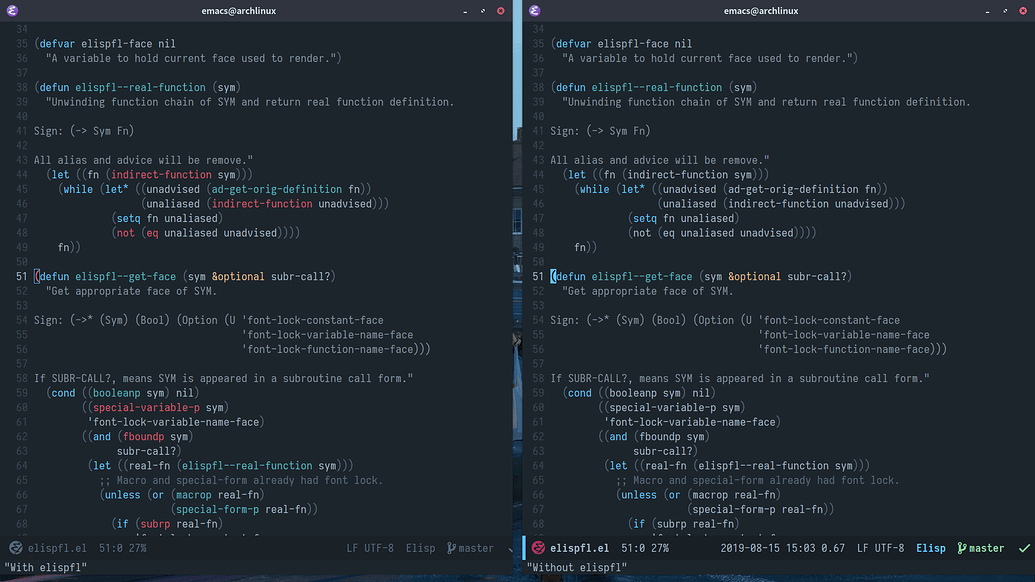
Running and communicating with subprocesses.įeatures for controlling the screen display. How Abbrev mode works, and its data structures. The syntax table controls word and list parsing. Searching buffers for strings or regexps.
Emacs lisp update#
Markers represent positions and update automatically when the text is changed. Manipulating windows and displaying buffers. How the editor command loop works, and how you can call its subroutines.ĭefining the bindings from keys to commands.Ĭontrolling how backups and auto-save files are made. Tools and tips for debugging Lisp programs.Ĭonverting Lisp objects to text and back.

Macros are a way to extend the Lisp language. Using symbols in programs to stand for values.Ī function is a Lisp program that can be invoked from other functions. The description of vectors is here as well.Ĭompound objects with programmer-defined types. Certain functions act on any kind of sequence. Lists, strings and vectors are called sequences. Lists, cons cells, and related functions. Strings, and functions that work on them. Buying copies from the FSF supports it in developing GNU and promoting software freedom." (a) The FSF’s Back-Cover Text is: “You have the freedom to copy and modify this GNU manual. A copy of the license is included in the section entitled “GNU Free Documentation License." Permission is granted to copy, distribute and/or modify this document under the terms of the GNU Free Documentation License, Version 1.3 or any later version published by the Free Software Foundation with the Invariant Sections being “GNU General Public License," with the Front-Cover Texts being “A GNU Manual," and with the Back-Cover Texts as in (a) below. This is the GNU Emacs Lisp Reference Manual corresponding to Emacs version 27.2.Ĭopyright © 1990–1996, 1998–2021 Free Software Foundation, Inc. To view this manual in other formats, click here. For information on using Emacs, refer to the Emacs Manual.


 0 kommentar(er)
0 kommentar(er)
